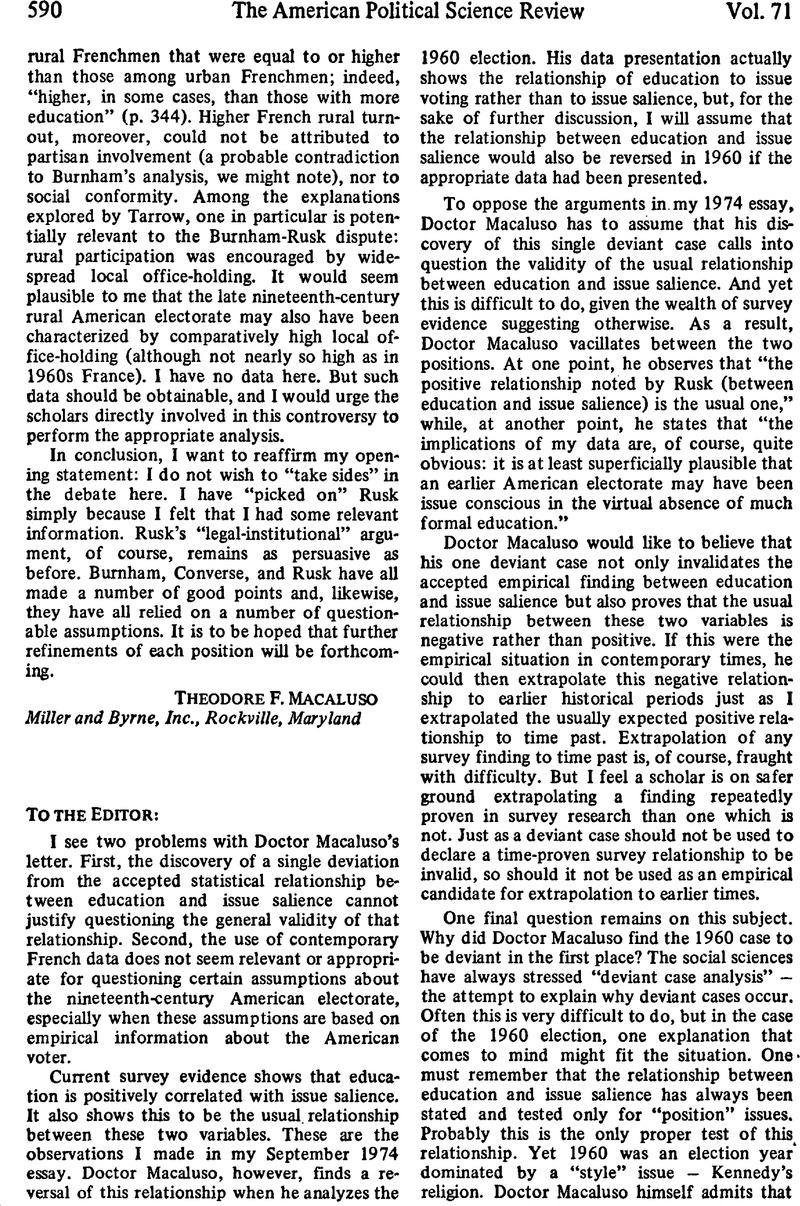No CrossRef data available.
Article contents
no title
Published online by Cambridge University Press: 01 August 2014
Abstract

- Type
- Letter
- Information
- Copyright
- Copyright © American Political Science Association 1977
References
page 591 note 1 There is yet another reason why I do not regard style issues as issues. I believe what is often referred to as a style issue should instead be labelled a candidate, group, or party image. Kennedy's religion, for example, could be seen as a “candidate characteristic” – part of his candidate image to the general public. Its net effect, of course, was negative. Kennedy lost more votes than he gained as a result of his religion, almost costing him the election. (See Converse, Philip E., Campbell, Angus, Miller, Warren E., and Stokes, Donald E., “Stability and Change in 1960: A Reinstating Election,” American Political Science Review, 55 (June 1961), 269–280.CrossRefGoogle Scholar) Kennedy's religion could also be perceived as part of a group image, evoking prejudicial feelings against Catholics and other minority groups. It might also be seen as part of the image of the Democratic party in that particular election. All of these images have in common an emotionally charged negativism which often engages the more politically apathetic, less-educated segment of the American electorate.




